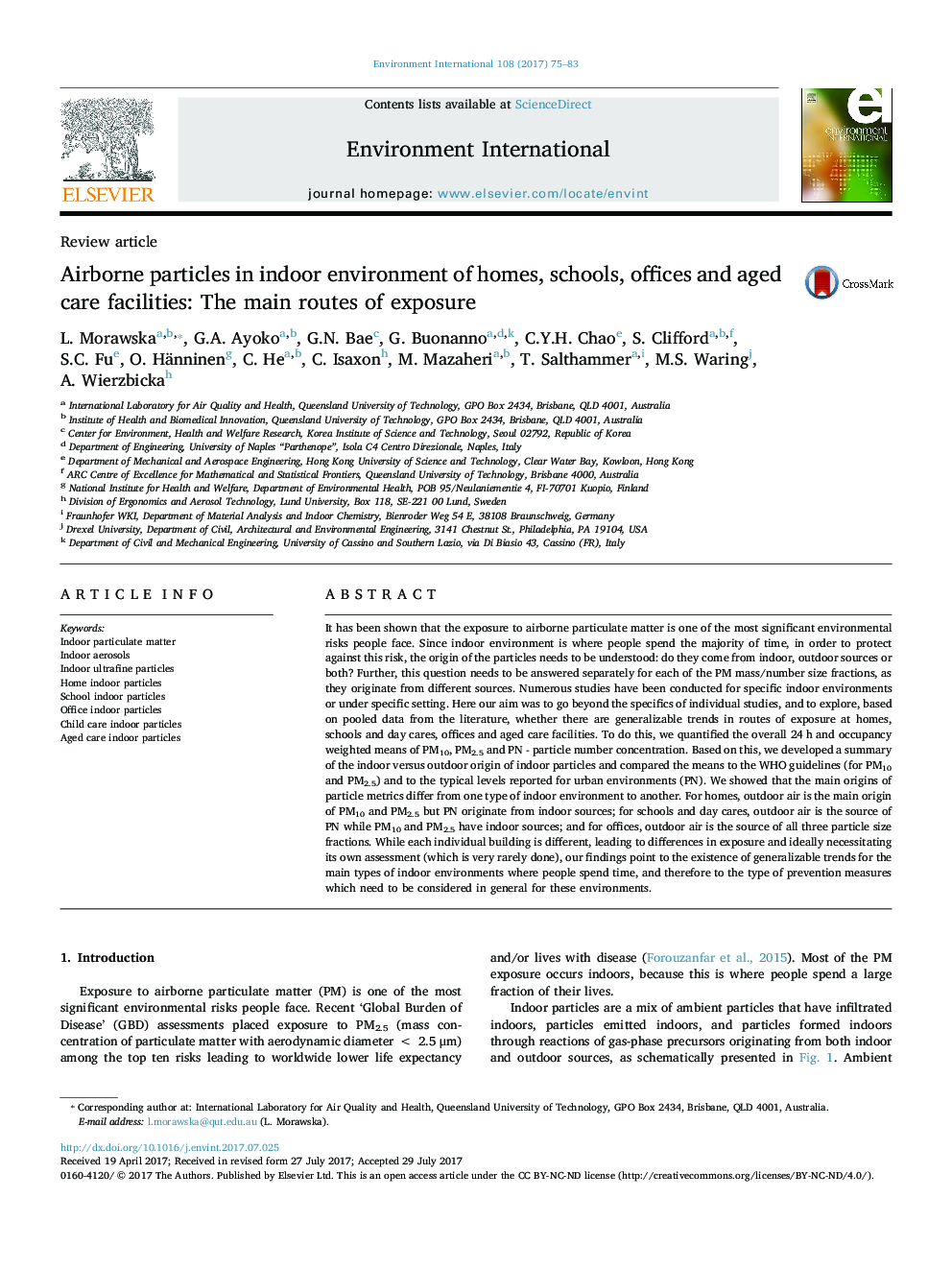| کد مقاله | کد نشریه | سال انتشار | مقاله انگلیسی | نسخه تمام متن |
|---|---|---|---|---|
| 5748189 | 1619022 | 2017 | 9 صفحه PDF | دانلود رایگان |
عنوان انگلیسی مقاله ISI
Airborne particles in indoor environment of homes, schools, offices and aged care facilities: The main routes of exposure
ترجمه فارسی عنوان
ذرات هوابرد در محیط داخلی خانه ها، مدارس، دفاتر و مراکز مراقبت سالم: مسیرهای اصلی قرار گرفتن در معرض
دانلود مقاله + سفارش ترجمه
دانلود مقاله ISI انگلیسی
رایگان برای ایرانیان
کلمات کلیدی
موضوعات مرتبط
علوم زیستی و بیوفناوری
علوم محیط زیست
شیمی زیست محیطی
چکیده انگلیسی
It has been shown that the exposure to airborne particulate matter is one of the most significant environmental risks people face. Since indoor environment is where people spend the majority of time, in order to protect against this risk, the origin of the particles needs to be understood: do they come from indoor, outdoor sources or both? Further, this question needs to be answered separately for each of the PM mass/number size fractions, as they originate from different sources. Numerous studies have been conducted for specific indoor environments or under specific setting. Here our aim was to go beyond the specifics of individual studies, and to explore, based on pooled data from the literature, whether there are generalizable trends in routes of exposure at homes, schools and day cares, offices and aged care facilities. To do this, we quantified the overall 24Â h and occupancy weighted means of PM10, PM2.5 and PN - particle number concentration. Based on this, we developed a summary of the indoor versus outdoor origin of indoor particles and compared the means to the WHO guidelines (for PM10 and PM2.5) and to the typical levels reported for urban environments (PN). We showed that the main origins of particle metrics differ from one type of indoor environment to another. For homes, outdoor air is the main origin of PM10 and PM2.5 but PN originate from indoor sources; for schools and day cares, outdoor air is the source of PN while PM10 and PM2.5 have indoor sources; and for offices, outdoor air is the source of all three particle size fractions. While each individual building is different, leading to differences in exposure and ideally necessitating its own assessment (which is very rarely done), our findings point to the existence of generalizable trends for the main types of indoor environments where people spend time, and therefore to the type of prevention measures which need to be considered in general for these environments.
ناشر
Database: Elsevier - ScienceDirect (ساینس دایرکت)
Journal: Environment International - Volume 108, November 2017, Pages 75-83
Journal: Environment International - Volume 108, November 2017, Pages 75-83
نویسندگان
L. Morawska, G.A. Ayoko, G.N. Bae, G. Buonanno, C.Y.H. Chao, S. Clifford, S.C. Fu, O. Hänninen, C. He, C. Isaxon, M. Mazaheri, T. Salthammer, M.S. Waring, A. Wierzbicka,
